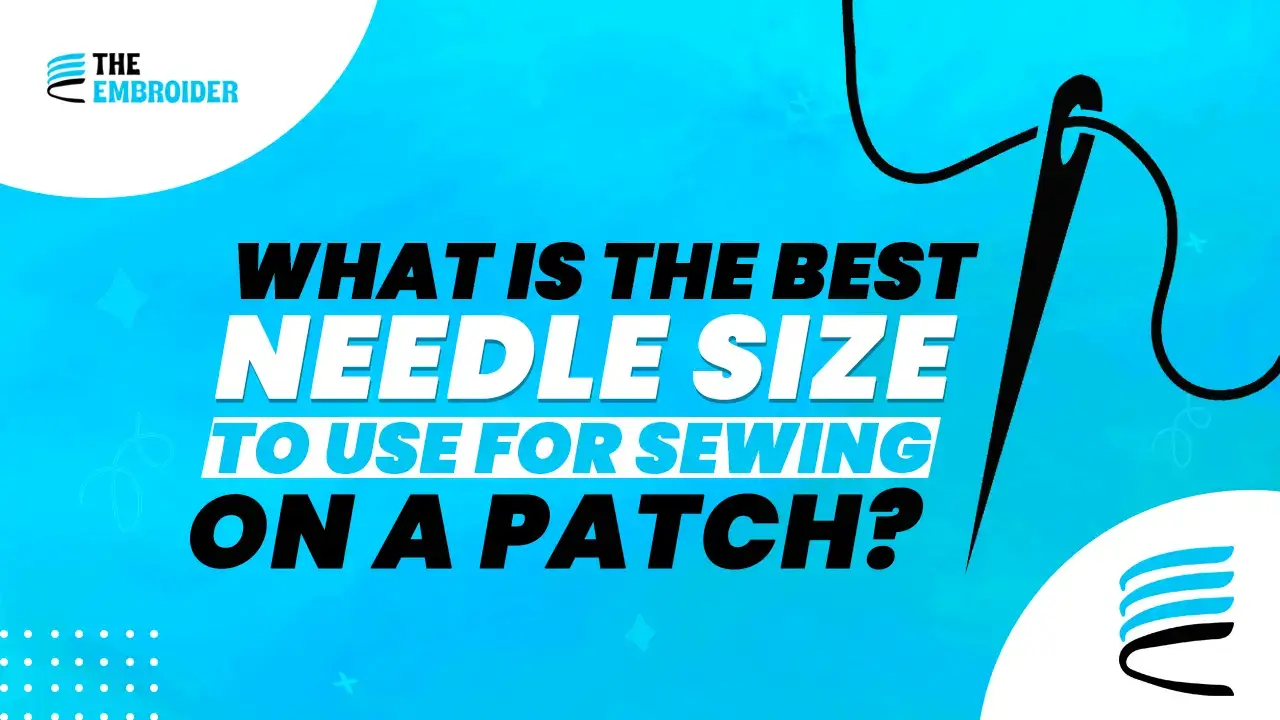Sewing patches onto clothes or bags is a clever way to refresh your wardrobe instantly. Whether you’re rocking bold embroidered patches or cozy chenille designs, the best needle size to sew on a patch can make the difference between flawless results and frustration. In this guide, we’ll reveal the ideal needle sizes for different patch types, whether you’re using a machine or sewing by hand and share pro tips to make sure your patches stay put and look polished.
Why Needle Size Matters
- A too-small needle struggles to penetrate thick materials, while a too-large needle risks tearing delicate fabrics.
- The right needle ensures clean sewing, secure attachment, and preserves both patch and garment integrity.
Needle Sizes for Different Patch Types
Embroidered Patches
- Medium fabrics (cotton/polyester): Use a Size 14/90 Universal Needle
- Heavy fabrics (denim/canvas): Opt for a Size 16/100 Denim Needle for easier piercing
Woven Patches
- Light fabrics: Size 11/75 Universal Needle
- Medium fabrics: Size 12/80 Universal Needle
Chenille Patches
- Thick fabrics: Size 16/100 Heavy-Duty or Denim Needle helps navigate plush textures
Rubber Patches
- Leather or thick fabric: Go with Size 16/100 or 18/110 Leather Needle, paired with sturdy thread for support.
Machine vs. Hand Sewing
Machine Sewing
- Universal Needle (14/90): A solid all-around choice
- Denim Needles (16/100 or larger): Best for thick patches like chenille or rubber
- Ballpoint Needles: Ideal for knits to prevent damage
Hand Sewing
- Sharps Needles (7–10): Versatile and reliable
- Embroidery Needles: Great for decorative stitches and thicker threads
Community Insight
From sewing aficionados on Reddit:
“I use size 16 or 18 needles to sew patches on my denim jackets with Guterman extra strong thread.”
This real-world feedback reinforces using size 16–18 for thick patches and fabrics especially denim highlighting both practicality and durability.
Pro Tips for a Smooth Sewing Experience
- Secure the Patch First: Use temporary adhesive or pins especially for lightweight or woven patches.
- Double-Stitch the Edges: Sewing twice around ensures long-term durability.
- Pick the Right Thread:
- Heavy-duty thread for thick patches (like chenille)
- Embroidery floss if you want a decorative touch
- Test First: Try stitching on scrap fabric to avoid surprises mid-sew
Quick Needle Size Reference Table
| Patch Type | Fabric Type | Needle Recommendation |
| Embroidered | Medium (cotton/poly) | Size 14/90 Universal |
| Embroidered | Heavy (denim/canvas) | Size 16/100 Denim |
| Woven | Light | Size 11/75 Universal |
| Woven | Medium | Size 12/80 Universal |
| Chenille | Thick | Size 16/100 Heavy-Duty/Denim |
| Rubber | Leather/Thick | Size 16/100 or 18/110 Leather |
Why the Right Needle Makes a Difference
- Fabric & Patch Protection: Prevents tears, puckering, and snagging
- Longevity: Proper stitching ensures patches withstand wear and wash
- Polished Results: You’ll get a clean, professional finish every time
Final Thoughts
Choosing the best needle size to sew on a patch isn’t just about technical specs. It’s what turns a casual craft project into a polished DIY masterpiece. Whether you’re applying embroidered, chenille, or woven patches, the right needle ensures your stitches stay strong, clean, and garment-safe. Now that you’ve seen the ideal sizes and sewing tips, why not put them into action?
FAQs
Q1: What needle size should I use for denim patches?
A: Use Size 16/100 Denim Needle (or 18/110 Leather Needle for extra-thick styles), paired with heavy-duty thread for best results.
Q2: Can I use a universal needle for any patch type?
A: Yes for medium-weight fabrics. But for heavy or specialty patches, switching to denim or leather needles ensures a smoother sew.
Q3: Should I hand sew or machine sew patches?
A: Machine sewing is ideal for speed and durability. For small details or delicate areas, hand-sewing with sharps or embroidery needles is your go-to.



